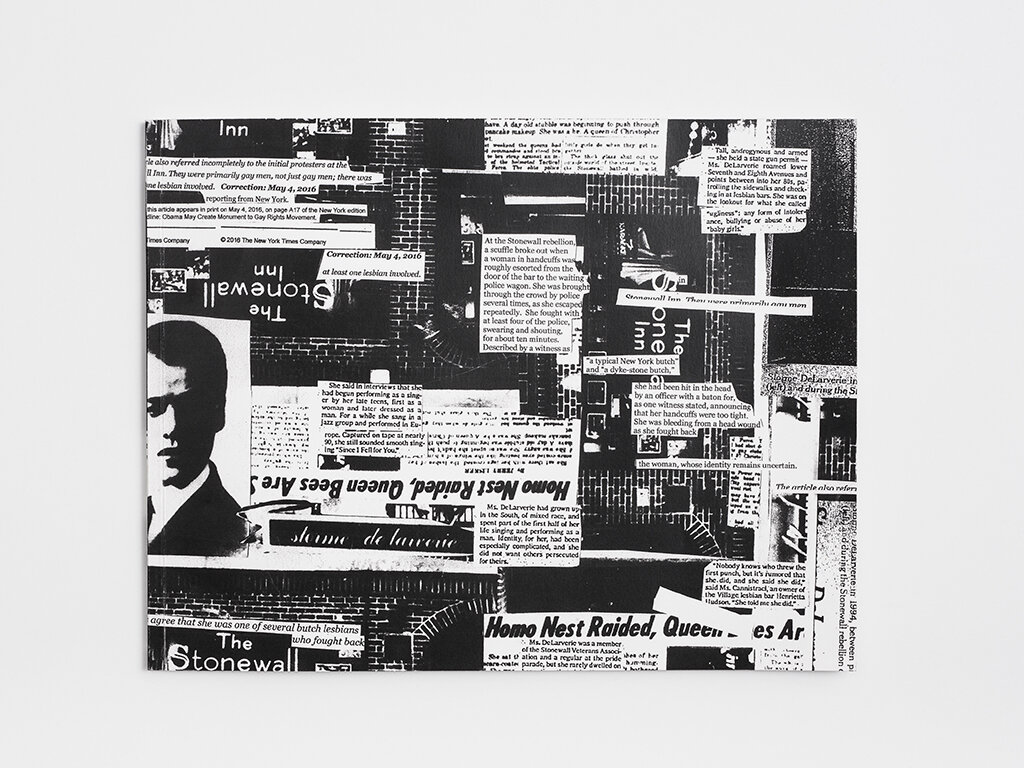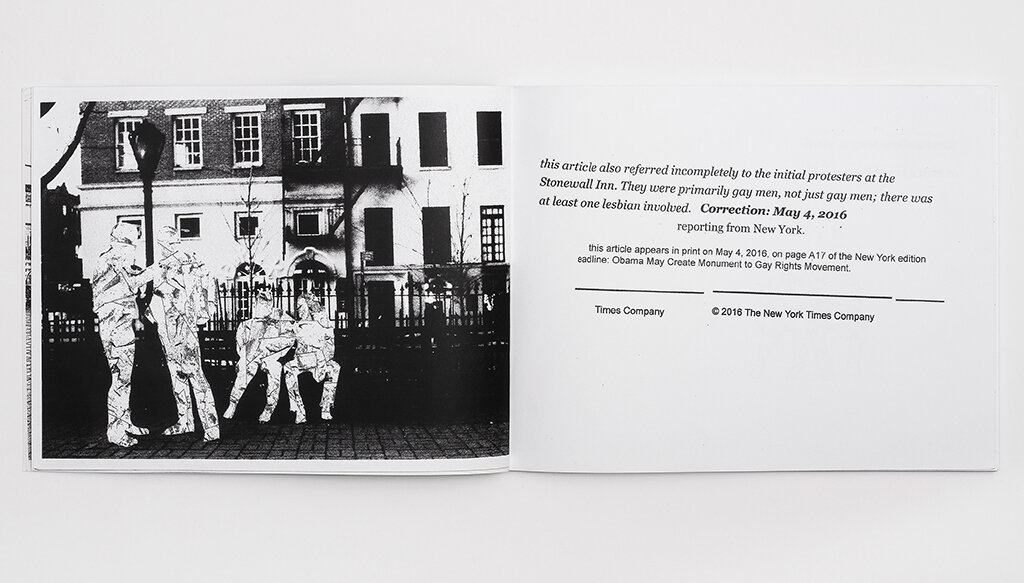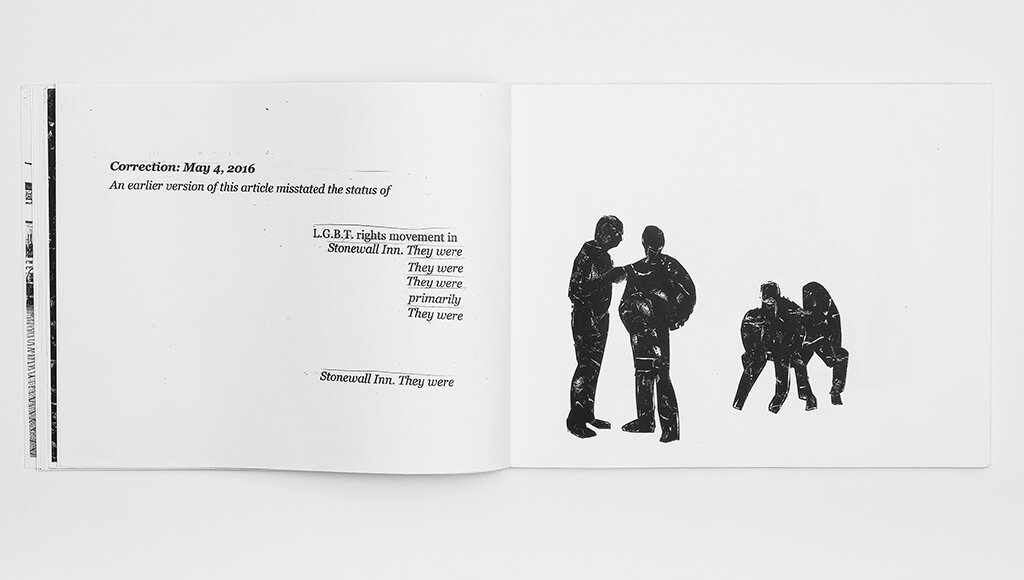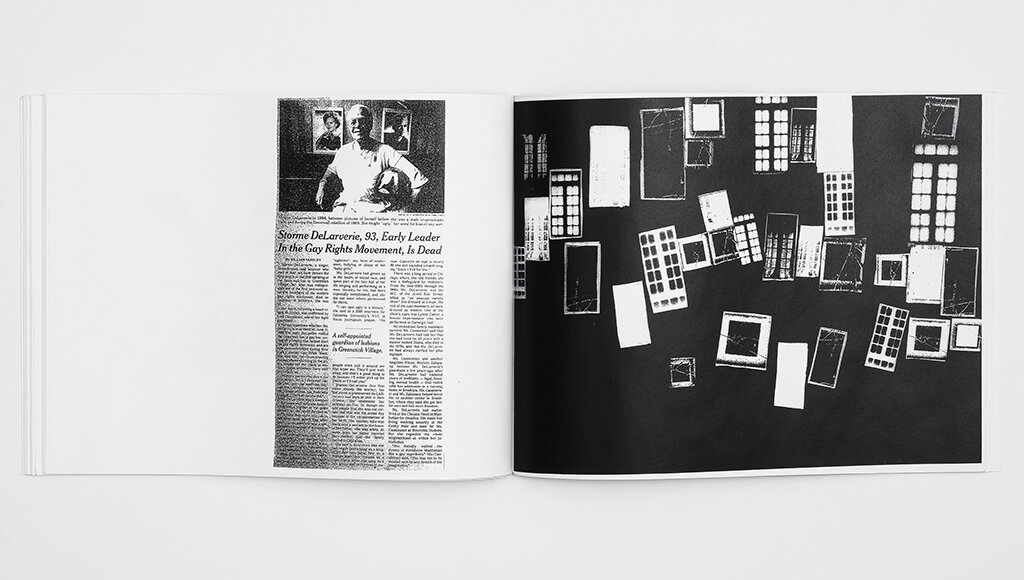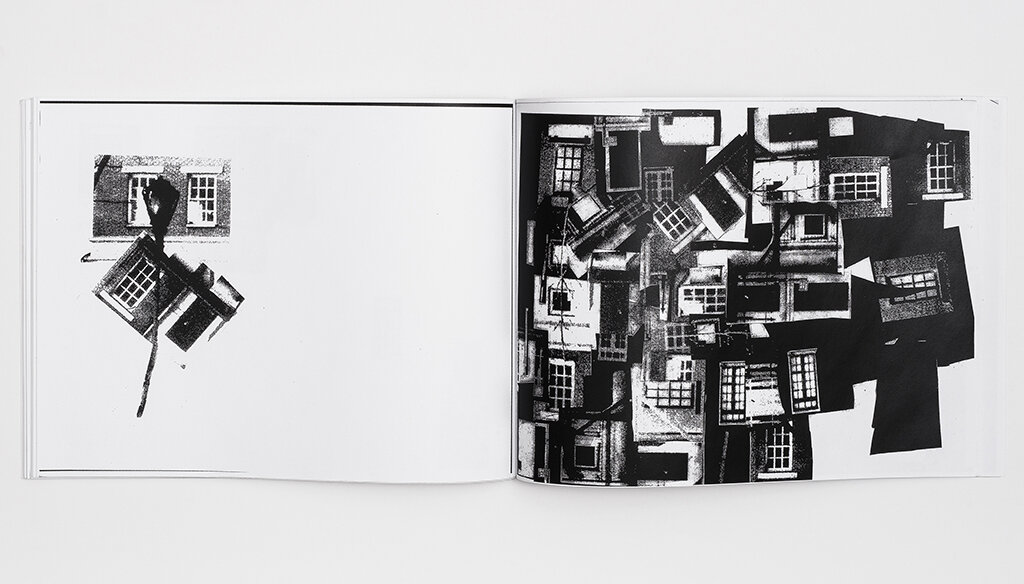bricks and stone
2016-2017
Perfect bound, soft cover, black and white
78 pages.
8.5 x 11 inches
Selected images shown.
The Stonewall Tavern in New York City’s West Village is frequently positioned as the primary site that sparked modern gay liberation. Gay, lesbian, transgender and queer people that patronized the bar were often besieged with police raids, and on a summer night in 1969, they fought back against cops. Stonewall still serves as a gay bar and as a place to gather for protests, vigils, and rallies.
In the past few years debates have arisen regarding the historical narratives of the Stonewall Riots. Hollywood and popular media have portrayed white cis-gender gay men as instigating the riots. Counter narratives state that trans women such as Marsha P. Johnson and Sylvia Rivera and butch dykes like Stormé DeLarvarie threw the first “bricks” at police. Recently this controversy led to activists altering the sculpture “Gay Liberation” by George Segal that serves as a historical marker outside of the tavern. The all white sculptures depicting four people, two men and two women, were temporarily transformed into trans women of color to protest their erasure from the story and the “whitewashing” of the Stonewall riots.
bricks and stone (2016-2017) is an artist book composed of collaged back and white photocopies with Xerox machine alteration. The book transforms contemporary articles from the New York Times, which present wildly differing accounts of the Stonewall Uprising, into prose and reconfigure the Segal sculptures to question the figure using abstraction and absence. The result is a poetic intervention that considers the function(s) of monuments, imagines alternative ways to move through cities, constructs (im)possible architectures, and explores how narratives shape space. The biography of Stormé DeLarvarie —a mixed race butch lesbian drag king from Louisiana, who is alleged to have had a role in igniting the Stonewall Uprising, but is often erased—is utilized as a site to understand how structural, vertical power creates and maintains (in)visibility. bricks and stone serves to acknowledge DeLarvarie’s erasure while honoring her legacy.
The first printing of bricks and stone (edition of 15) is sold out. The book was accessioned, along with Stormé at Stonewall, a light box installation, for which it was the pre-cursor, into the permanent collection of the National Portrait Gallery, Smithsonian Institution, in 2022.
